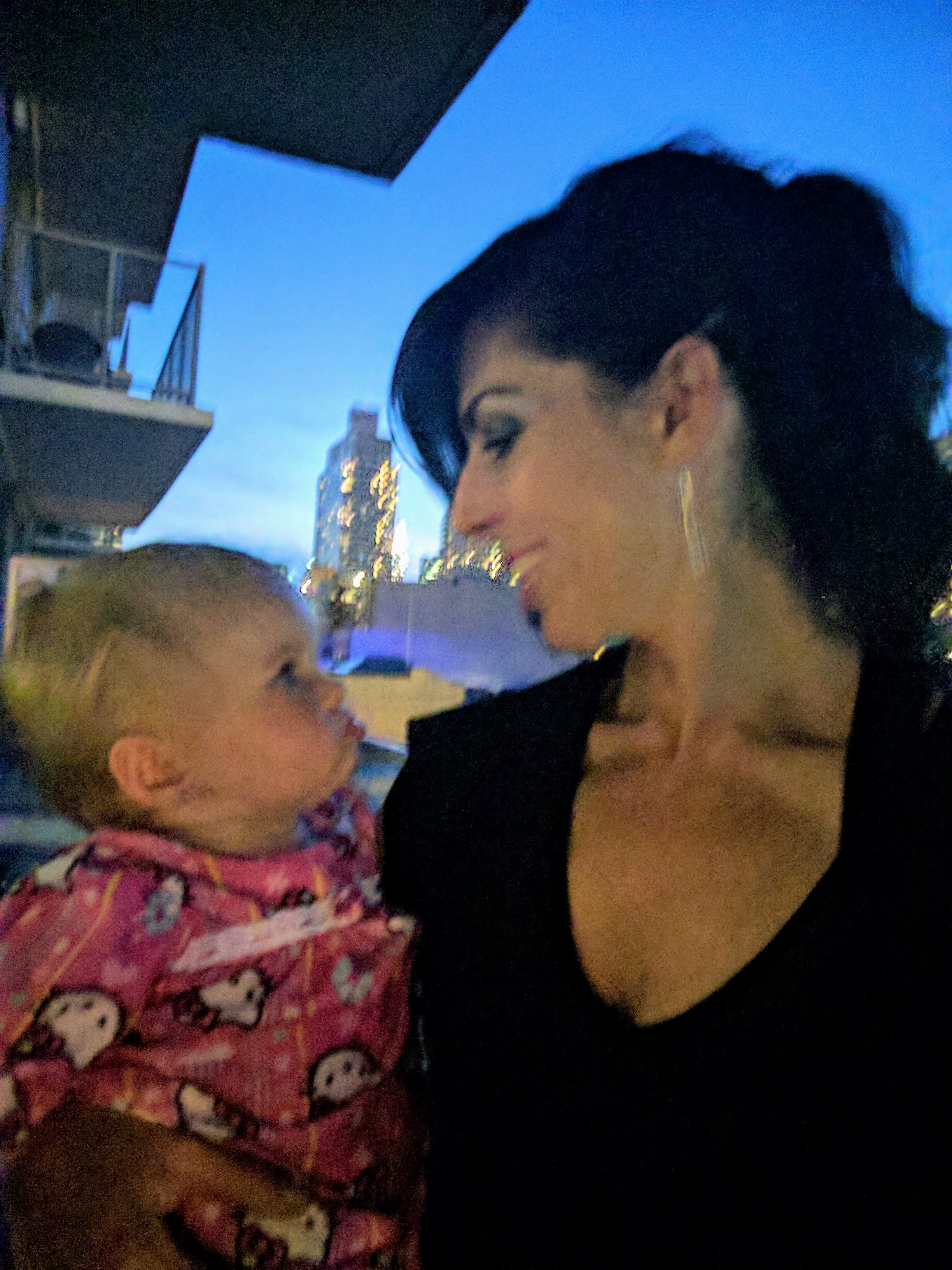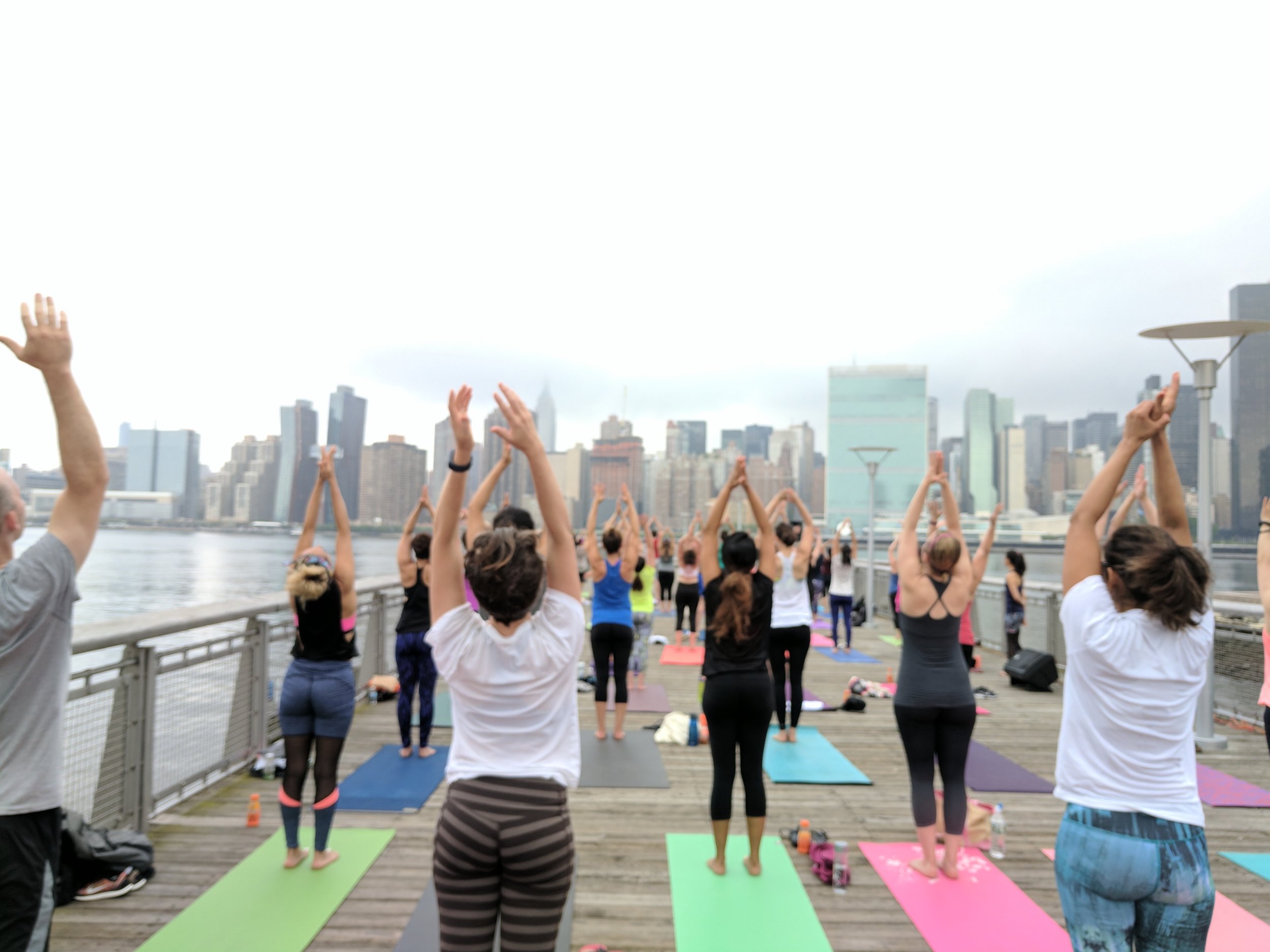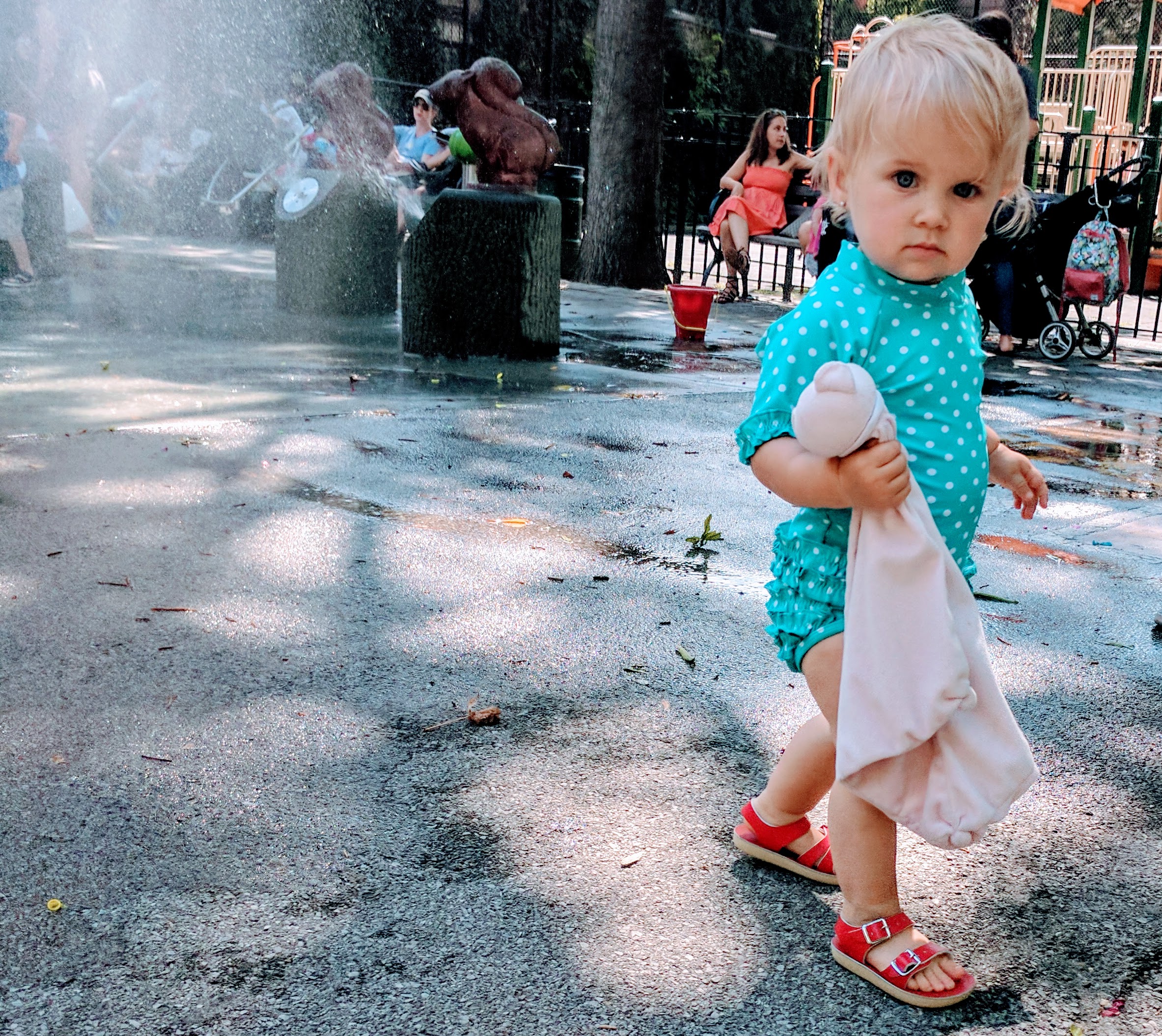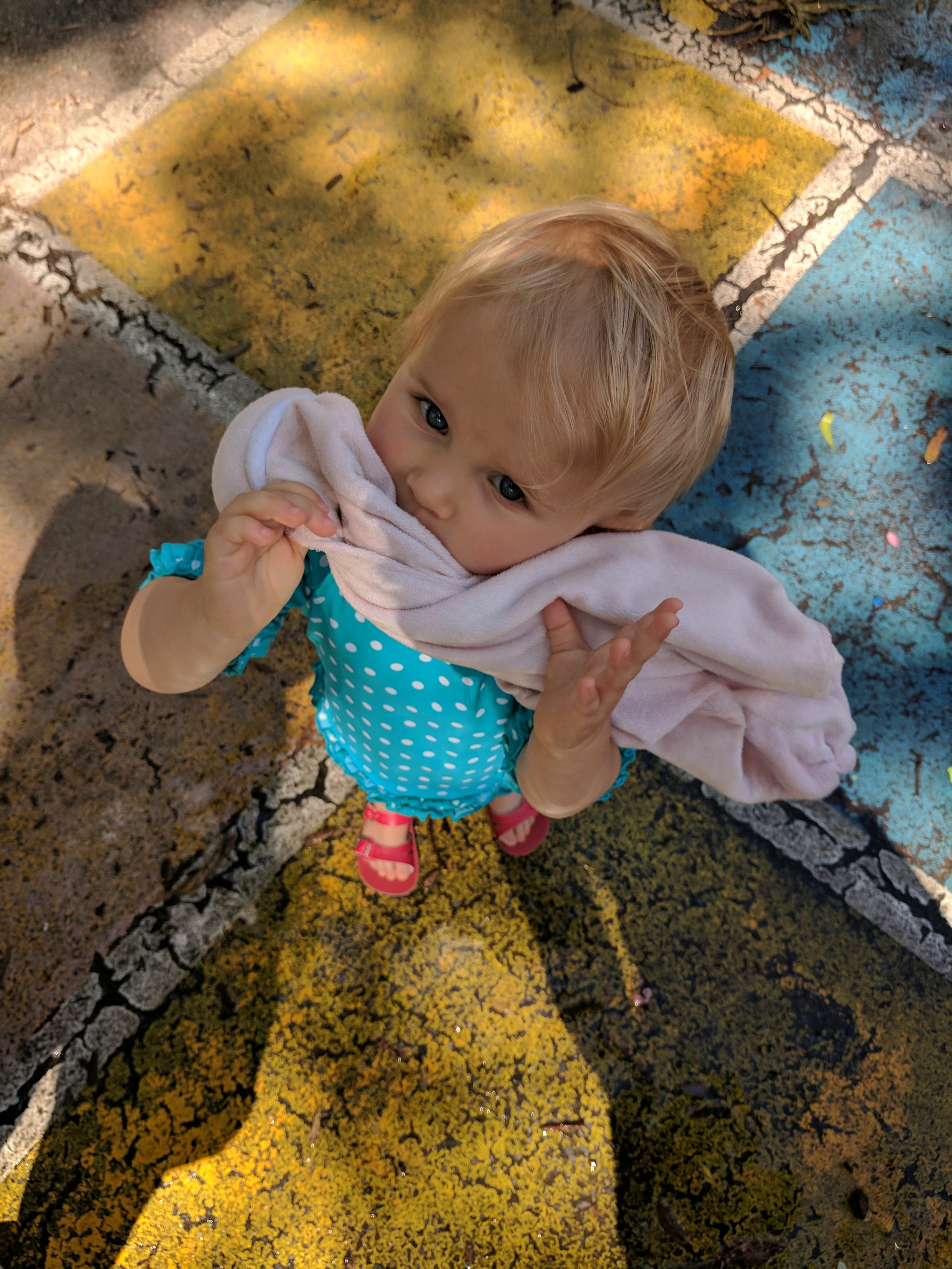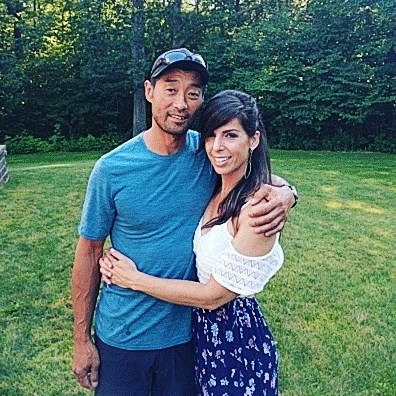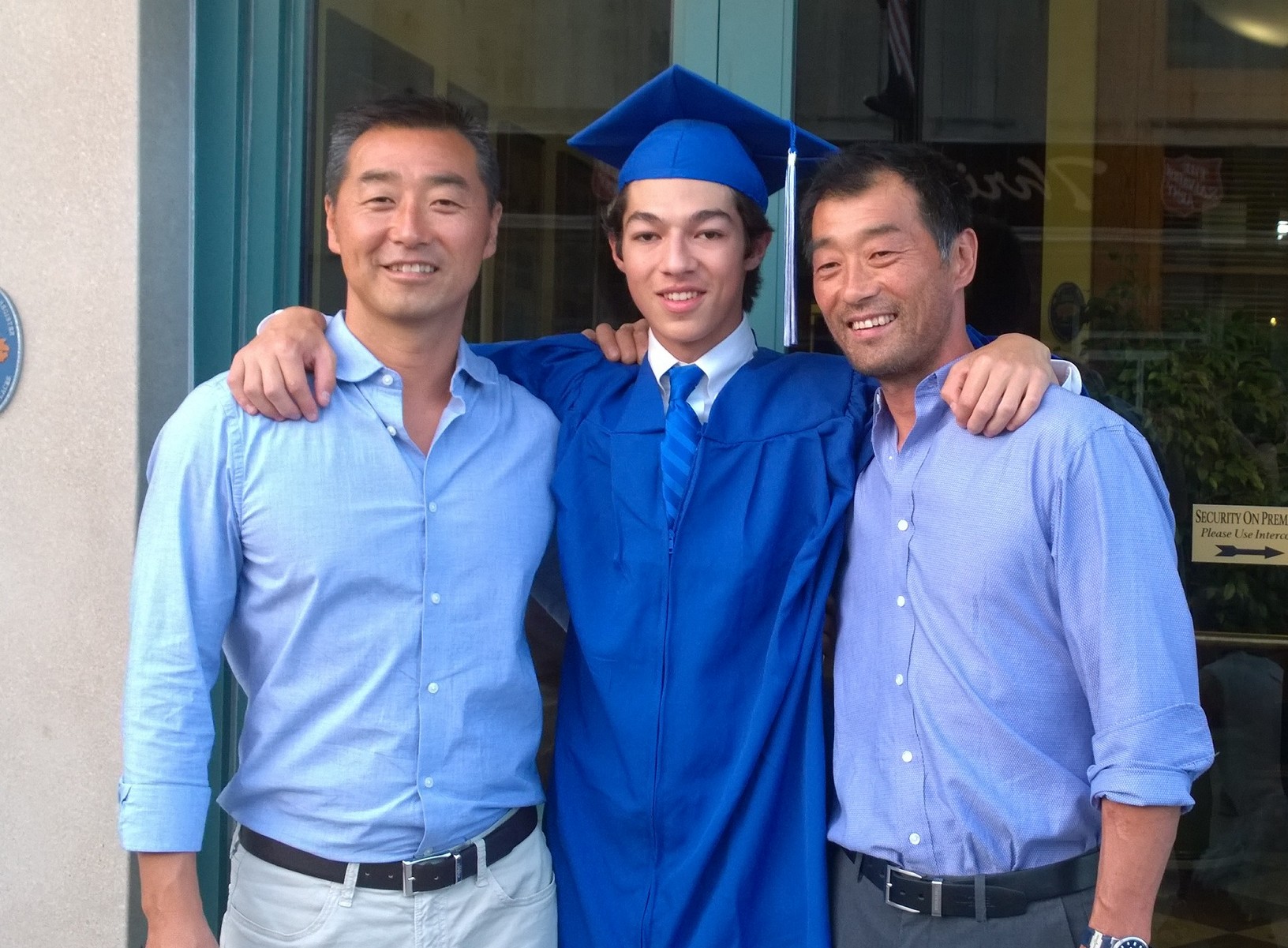From McKenzie Burnett on Medium. June 8, 2015
Researching all these individuals and their experiences, I felt like I was reading about the superheroes of the tech startup world.
I am starting a software company with a few friends. As a mixed-gender founding team, we all believe strongly in gender equity and in the collective strength brought by diverse teams. We wanted this to translate into a gender-diverse board of investors and advisors.
Why is this important? As Sukhinder Singh Cassidy, founder and CEO ofJoyus, mentions in her article promoting entrepreneurs to #ChoosePossibility, “Diverse thinking can benefit private tech boards potentially even more than public ones, and there is no reason to wait.” Everyone can benefit from a diversified investor board. Cassidy gives one option for achieving this diversity, saying, “Entrepreneurs seeking to enhance their startup’s performance can choose today to add their first qualified female board member or investor.”
When I went to research early-stage investors, however, I found it incredibly difficult to find anyone other than male investors in my startup’s space (application infrastructure/PaaS/enterprise). Determined, I found with a little digging that the information I was looking for was there — it was just scattered across the internet. Starting with female investors, I consolidated my findings into a descriptive list of experienced angels and early-stage investors with experience in all sorts of tech, so that anyone can easily use it to choose today to pursue diverse investor and advisory boards.
In addition to doing my own research, I’ve talked to top investors, industry leaders, and close friends to source content for this list. I hope it will serve as the beginning of a growing resource and discussion. Anyone can suggest additions and offer their own experiences working with gender-diverse investors in the tech industry, thus adding to the public knowledge and reputation of each of these awesome individuals.
Angel networks
#Angels. A group of some of the most powerful women at Twitter (or formerly at Twitter), these six angels are investing individually but still pooling their collective expertise around their investments. The individuals are included in the list below.
37 Angels. Awesome network of female angels. Invests in deals between $50k and $150k. They “also offer an unique training program to educate novice angels in the fundamentals of investing in young companies,” according to their website.
Broadway Angels. This network of around 20 angels is “an angel investment group made up of world-class investors and business executives who all happen to be women.” While they mostly invest in information technology, they are open to other areas of investment, as well. The individuals are included in the list below.
Female Investors Opportunities List. Collection of over 100 female investors, organized by Sarah Kunst. According to Sarah’s Medium article, “It’s a Google Group comprised of every female startup investor you know of and tons you don’t. They’re smart, they write checks and they are available to speak, be interviewed, mentor, judge and invite to your super private influencers dinners. They’re from all over the country, they will travel for the right opps and they provide insight and capital you’re otherwise lacking.” Email kunstsar at gmail with any opportunities and she will share them with the group.
Golden Seeds. With both an angel network and a venture capital side, this organization strongly supports female investors and is one of the largest and most well-known female angel networks in the country. With offices in New York, Boston, Silicon Valley, Southern California and Texas, Golden Seed’s angel network covers some of the biggest tech hubs in the United States.
Pipeline Fellowship. With the characteristic t-shirt slogan, “This Is What an Angel Looks Like,” Pipeline is all about changing the face of angel investing through training women to be angel investors. While they do focus on social entrepreneurship, this would be a great place for any entrepreneur to start looking to build relationships with a number of the country’s top female angel investors. Founded by Natalia Oberti Noguera.
Angels and early-stage investors
Aileen Lee, Founder of Cowboy Ventures, Partner at KPCB. Typically invests $100k-$1m per deal. Invests in wide variety of tech, such as enterprise, mobile, analytics, payments, e-commerce, SaaS. Has invested in Librato, Rent the Runway, DocSend, and a number of other companies. Also part ofBroadway Angels.
Alicia Syrett, Founder and CEO of Pantegrion Capital. Typically invests $10k-$50k per deal. Invests in consumer internet, e-commerce, and mobile. Invested in Little Passports, Golden Seeds, HeTexted, BeautyBooked, and more. Board member of New York Angels.
Allison Thoreson Bhursi, Angel Investor. Typically invests $10k per deal. Invests in health tech, mobile, and education. Invested in Boostable, True Link, MasteryConnect, LocoMotive Labs, and more. Twenty years of business experience in finance, consumer products and technology. Previously worked for eBay’s Business Incubation Group with a focus on social and mobile e-commerce. Also part of Broadway Angels.
Amy Banse, Managing Director and Head of Funds of Comcast Ventures. She “spent the early part of her career overseeing the development of Comcast’s cable network portfolio” according to her bio on the Broadway Angelswebsite.
Ana Díaz-Hernández, Investment Associate at Kapor Capital. Invests in seed startups w/ social impact, in markets like consumer internet, enterprise software, mobile, healthcare, education, and fintech.
Andrea Zurek, Founding Partner of XG Ventures. Typically invests $25k-$100k per deal. Invests in consumer internet (mobile, video, gaming, social media, and online media sectors), but also scopes wider to include SaaS, cloud computing, and analytics. Prolific investor, has invested in Facebook, Apptimize, Keen IO, and over 50 other companies.
Angela Lee, Founder of 37 Angels. Experience in education space. Assistant dean at Columbia Business School.
Anita Brearton, Founder of CabinetM. Typically invests $10–25k per deal. Invests in consumer internet, digital media, IT. Invested in Crimson Hexagon, Lark, Gracious Eloise. Based in Boston.
Ann Miura Ko, Co-Founding Managing Partner of Floodgate. Typically invests $500k-$1M per deal. Invests in enterprise software and mobile. Invested in Lyft, Modcloth, Refinery29, TaskRabbit and others. Also a Stanford PhD/lecturer.
Annie Kadavy, Investor at CRV. Invests in all kinds of tech, including SaaS, retail, design, electric vehicles, bicycles, transportation, and more. Invested in Patreon, DoorDash, ClassPass, Cratejoy, and Laurel & Wolf.
Anu Duggal, Founder of Female Founders Fund. Invests in consumer internet.Invested in Manicube, Dating Ring, Loverly, Maven, Minibar, and F Cubed. Female Founders Fund invests seed capital and mentorship in women entrepreneurs.
April Underwood, Founding Partner of #Angels. Invests in cleantech, healthcare, enterprise, and more. Invested in Glassbreakers, Hale Health, and Cue Health. A ton of experience with product development from her time as Director of Product at Twitter.
Beth Ellyn McClendon, Angel Investor. Typically invests $100k–$200k per deal. Invests in a wide variety of tech, including hardware. Invested in Leap Motion, Shyp, AngelList, Lightbox, and others.
Caryn Effron, Managing Director of Ackman-Ziff. 20 years of experience in commercial real estate finance, founded GoGirl Finance. Member of Pipeline Fellowship. Focus on education, real estate, and finance.
Caterina Fake, Founder Partner of Founder Collective, Chairman of Etsy.Invests in a wide variety of tech. Previous co-founder of Flickr and Hunch, Caterina currently serves as both an investor and chairman of Etsy. Also has invested in Chloe + Isabel, Typekit, Wavii (acquired by Google), and Zipongo.
Chloe Sladden, Founding Partner of #Angels. Invests in cleantech, mobile, health, digital media and analytics. Invested in Cleanly, Other Machine Company, Moxxly, and Blockchain Capital. Brings experience in digital media as the former Vice President, North American Media at Twitter.
Christina Bechhold, Investor at Samsung Open Innovation Center. Also co-founded Empire Angels. Invests in e-commerce, social media, fintech, IoT, consumer internet, and more. Invested in Hullabalu, weeSpring, StatSocial, Human Demand, ZoomCar India, MyDROBE, and The Infatuation.
Christina Brodbeck, Founding Team Member of YouTube. Typically invests $15k–$25k per deal. Invests on consumer tech, with a skillset/focus on UI/design. Invested in Storify, Fobo, inDinero, and others.
Christine Herron, Investor at Intel Capital. Typically invests $5k-$15m per deal. Invests in consumer tech. Invested in Goldbelly, Yummly, FundersClub, and others. Also serves as a Board Advisor to StartX and a Venture Advisor at 500 Startups.
Cindy Padnos, Founder and Managing Partner of Illuminate Ventures.Typically invests $100k-$500k per deal. Invests in all sorts of tech, including cloud computing, mobile, enterprise, SaaS, sales automation, marketing, and more. Invested in Influitive, Sense, yozio, Unshackled, Coupang, Allocadia, BrightEdge Technologies, Red Aril, and more.
Claudia Iannazzo, Angel Investor. Invests in mobile, social media, digital media, advertising, and more.
Cyan Banister, Angel Investor. Typically invests $50k-$1m per deal. Invests in consumer internet, enterprise, Bitcoin, SaaS. Invested in Uber, Rapportive, Zappos, and many more. As someone commented on AngelList, getting early/lead investment is a sign “that many other angels watch.” Find Cyan on Twitter.
Eileen Burbidge, Founder Partner at Passion Capital. Typically invests $250k per deal. Invests in mobile, B2B, analytics, and more. Invested in Mattermark, Maven, DueDil and others. Product and business development experience at Apple, Skype, Sun. Based out of London, so she has strong contacts in both the U.S. and the U.K./Europe. Invests as an angel and as a partner at Passion Capital.
Ellen Levy, Managing Director of Silicon Valley Connect. Recently referred to as the most connected woman in Silicon Valley. Invests in all sorts of tech, ranging from application platforms to hardware to education. Extensive experience working in senior leadership for LinkedIn and Apple, as well as with Stanford University. Invested in RelateIQ and Piazza, among others. Also part of Broadway Angels.
Ellie Wheeler, Investor at Greycroft Ventures. Invests in all sorts of tech, including enterprise software, B2B, e-commerce, automotive, and social ventures. Invested in Xobni, Plain Vanilla Games, Daily Secret, Mister Spex, NuORDER, Windeln.de, BaubleBar, and Fisoc.
Emily Melton, Partner at DFJ. Invests in mobile, cleantech, healthcare, and enterprise software. Invested in Pulse and Other Machine Company. Advisor to Poshmark. Formerly a partner at DFJ. Also part of Broadway Angels.
Heidi Roizen, Operating Partner at DFJ. Invests in consumer internet, social media, digital media, and mobile. Invested in Draper University, Vango, and advised Socialize. As someone mentioned on AngelList, “Heidi is a legend in Silicon Valley (just go look up the HBR case study on her).”
Irena Goldenberg, Angel Investor. Invests in e-commerce, games, social media, mobile, payments. Investor in Privalia, Spartoo, Photobox, and Glassesdirect.
Jalak Jobanputra, Founder/Managing Partner of FuturePerfect Ventures.Typically invests $50k-$500k per deal. Invests in enterprise software, mobile, analytics. Investor in Ticketfly, Thumbplay, Outside.In, and others. Also an advisor for L’Oreal and an investor at Intel Capital.
Jana Messerschmidt, Founding Partner of #Angels. Invests in developer APIs, Android, mobile, social media, and more. Currently Vice President of Global Business Development & Platform at Twitter.
Jennifer Carolan, Founder of Reach Capital (NewSchools Venture Fund).Typically invests $50k per deal. Invests heavily in education, with a broad depth of experience in the education space. Invested in NoRedink, Motion Math, Engrade, MasteryConnect, CodeHS, and more. Also part of Broadway Angels.
Jennifer Lum, Founder of Adelphic. Typically invests $10k-$25k per deal. Invests in all kinds of tech, including backend/cloud services. Invested in Crashlytics, Kinvey, and TribeHR. Based out of Toronto/Boston.
Jennifer Scott Fonstad, Founder of Broadway Angels, Co-Founder of Aspect Ventures. Typically invests $250k-$1m per deal. Invests in mobile applications, consumer and enterprise application services, and energy management. Invested in Athenahealth, Achex, NetZero, and more. Currently managing director of Draper Fisher Jurvetson.
Jenny Fielding, Angel Investor. Typically invests $20k per deal. Invests in wearables, mobile, IoT, consumer tech. Invested in Techstars, Kinetic, Bitfinder, and others.
Jenny Lefcourt, Founder of WeddingChannel and Bella Pictures. Typically invests $500k-$1m per deal. Invests in marketplaces, mobile & enterprise. Invested in Main Street Hub, MomentFeed, P. Relan YouWeb Incubator, and Shuddle.
Jessica Livingston, Founder of Y-Combinator. Probably one of the most influential women in the startup/investor world, AngelList only lists one investment for Jessica — Wevorce. Her experience at Y-Combinator speaks for the rest.
Jessica Peltz, Investor at kbs+ Ventures. Typically invests $100k per deal. Invests in mobile, location-based services, retail, big data, analytics, and more. Invested in Adsnative, wedgies, Mezzobit, Roost, Indicative, and MONTAJ.
Jessica Verrilli, Founding Partner of #Angels. Invests in mobile, analytics, digital media, enterprise software, social commerce, SaaS, and more. Invested in ZenPayroll, Getable, and Philz Coffee. Formerly Director of Corporate Development & Strategy at Twitter, now a partner at Google Ventures.
Jill Preotle, Angel Investor. Typically invests $50k-$100k per deal. Invests in all sorts of tech, including mobile, marketplaces, consumer goods, fashion, and e-commerce. Invested in TaskRabbit, ezCater, Zipcar, Playrific, Rifiniti, Crimson Hexagon, and RallyPoint.
Joanna Drake Earl, Angel Investor. Invests in mobile, social media, supply chain management, and more. Invested in Feed Media, Rocksbox, SupportPay, Other Machine Company (OMC), and more. Founded Current TV and sold to Al Jazeera. Immense experience in intersection of technology, consumer, media and television sectors. Also part of Broadway Angels.
Joanne Wilson, Angel Investor. Typically invests $10k-$100k per deal. Invests in all sorts of tech, including e-commerce, online retail, big data, analytics, and more. Invested in Blue Bottle Coffee, LE TOTE, EDITD, Hullabalu, and over 50 more companies.
Joyce Chung, Managing Director at Garage Technology Ventures. Typically invests $100k-$1m per deal. Invests in cleantech, IT and internet startups. Invested in SimplyHired, WhiteHat Security, and Zilliant.
Julia Popowitz, Angel Investor. Typically invests $25k–$50k per deal. Began her career after graduating from Harvard Law School at Wilson Sonsini Goodrich Rosati, and then moved on to Facebook in 2006 as the second attorney in the legal department. Has a wide breadth of investments including focus areas in e-commerce, mobile, digital media, SaaS, big data, finance, and more. Invested in Uber, Stripe, Ali Baba, Palantir, Survey Monkey, Locu, Spreecast, ZenPayroll, and more. Also part of Broadway Angels.
Julie Blanc, Investor at Two Sigma Ventures. Invests in consumer internet, enterprise software, SaaS, robotics, and more. Invested in Two Sigma Ventures and Pluralsight.
Julie Chin, Angel Investor. Typically invests $5k-$25k. Invests in mobile and other markets. Invested in Heroku, RidePal, and 280 North.
Katherine Barr, General Partner at Mohr Davidow Ventures. Invests in a lot of different types of tech, including IoT, healthtech, and big data/analytics. Invested in Ticketfly, Visible Measures, and Retention Science. Advisor for 500 Startups.
Katie Jacobs Stanton, Founding Partner of #Angels. Invests in cleantech, health care, digital media, social media, analytics and more. Invested in Lowercase Capital, Change.org, Shape Security, and iAutos (China). Currently Vice President of Global Media at Twitter.
Katie Rae, Investor at Techstars. Typically invests $10k-$50k per deal. Invests in internet tech. Invested in peerTransfer, Spindle, and Bison. As someone on AngelList mentioned, “[Katie] finds a way to be on the entrepreneur’s side and build them up — for real, and for good — rather than simply point out problems. Even if she’s giving you tough love, you know she’s in your corner helping you get out there to go another round.”
Kay Koplovitz, Founder of Boldcap Ventures, Springboard, and USA Network. A serious veteran in the media/television world, Kay now focuses on helping women-led companies in technology and life sciences. Also founded NY Fashion Tech Lab (NYFT Lab).
Kelly Hoey, Angel Investor, Columnist in Inc.com. Invests in various tech sectors with a heavy focus on mobile. Investoed in Levo, Hullabalu, SQL Vision, flowthings.io, Smigin and CloudPeeps. Prior investments include AppGuppy (acquired by Flow) and Philantech (acquired by Altum). Sits on the boards of two startup accelerators, JuiceLabs (Cairo) and Tampa Bay WaVE. Also the Chief Technology Ambassador for the YWCA of NYC’s Geek Girls Club.
Kelly Quann Bianucci, Managing Principal at Discover Capital LLC. Typically invests $25k per deal. Invests in aerospace, consumer internet, enterprise software, healthcare, and more. Investor in TrueFacet, TomboyX, Storyvine, Pharmajet, and Investor’s Circle. Based in Denver.
Kim Polese, Founder of Marimba. Invests in all sorts of tech, including hardware, enterprise software, mobile, and healthcare. Invested in TrustedID and Vonage. Also part of Broadway Angels.
Kirsten Green, Founder of Forerunner Ventures. Typically invests $500k per deal. Forerunner Ventures focuses on “technology enabled consumer companies.” Invested in Bonobos, Warby Parker, Dollar Shave Club and Birchbox, among others.
Kristina Montague, Managing Partner at TheJumpFund. Invests in clean tech, mobile, enterprise software, and more. Invested in Feetz, eDivv, Rimidi, Rooibee Red Tea Company, and SuperFanU.
Lara Druyan, Angel Investor. Typically invests $50k per deal. Invests in application platforms, e-commerce, mobile, big data, and other software. Invested in Quixey, Powerset, and Index. Formerly General Partner at Allegis Capital.
Lauren Flanagan, Founder of BELLE Capital USA, Phenomenelle Angels Fund.Typically invests $25k-$500k per deal. Invests in SaaS, big data, e-commerce, mobile, biotech, wearable tech. Invested in Eragen Biosciences, Stemina Biomarker Discovery, Finomel, and more.
Laurie Yoler, SVP Business Development and President of Qualcomm Labs.Typically invests $50k-$100k per deal. Invests in digital media and consumer goods. Invested in Tesla, Packet Design, and others. Founder of GrowthPoint Technology Partners. Also part of Broadway Angels.
Leslie Blodgett, CEO of Bare Escentuals. Transformed Bare Escentuals from a small Bay Area store to a cosmetic empire, taking the company public in 2006 and seeing it through a $1.8 billion acquisition by Shiseido, the Japan-based leading cosmetics company. Leader in the cosmetic/beauty industry, servces on the board of Cosmetic Executive Women (CEW). Also part ofBroadway Angels.
Linda Holliday, Founder and CEO of Citia. Typically invests $25k–$100k per deal. Invests in digital media. Invested in Small Demons, Comixology, and SetJam.
Lorine Pendleton, Angel Investor. A Pipeline Fellows alumna, Lorine invests in mobile, legal tech, clean tech, consumer internet, enterprise software and more. Invested in Hire an Esquire, Traklight, and Cisse Trading Co.
Magdalena Yesil, Angel Investor. Invests in SaaS, cloud computing, security, and more. Invested in Salesforce.com, 3Ware, Claria, Securify, and Valicert.
Maha Ibrahim, General Partner at Canaan Partners. Typically invests $2m-$5m per round as a partner at Canaan. Invests in data centers, internet infrastructure, networking, digital media, video games and more. Invested in Kabam, Mobilitec, Virsto Software, 3Crowd Technologies, SenSage, eBillMe, Pickspal, and Inhale Digital. Also part of Broadway Angels.
Mar Hershenson, Founder of Tocata Mobile, Sabio Labs, & Barcelona Design. Invests in consumer internet, enterprise software, mobile, and healthcare. Invested in Qwiki, Heap, Washio, True & Co, Lumoid, DoorDash, Wevorce, and Sensor Tower.
Marissa Campise, Vice President at Venrock. Typically invests $250k in a seed round deal. Invests in mobile and IoT. Invested in Klout and Netservice. Also a Senior Associate at Greycroft Partners.
Mary Jane Elmore, Angel Investor. Invests in specialty foods, e-commerce, digital media, advertising, and more. Invested in Deal Decor and Foodydirect. Former General Partner of and current advisor to Institutional Venture Partners (IVP). Also part of Broadway Angels.
Meagan Marks, Angel Investor. Typically invests $15k-$30k. Invests in mobile, social media, and more. Based in London.
Megan Quinn, Partner at Kleiner Perkins Caufield Byers. Invests in consumer internet & mobile. Invested in Square, Uber, Remind, Slack, Codecademy, Nextdoor, Quirky,Shyp, Level Money, and Tradesy. Formerly led product at Square and Google.
Miriam Rivera, Co-founder of ULU Ventures. Typically invests $25k-$100k per deal. Invests in enterprise software, IT. Invested in Palantir, GCommerce, Huddler, Jubon, Matchbin, and more. Also part of Stanford Angels.
Natala Menezes, Angel Investor. Typically invests up to $50k per deal. Formally worked at Google, Amazon, and Microsoft and has experience with product design, UX and go-to-market decisions. Invested in Shift and Belle Clementine.
Nisa Amoils, Angel Investor. Typically invests $10k-$100k. Invests in consumer internet/goods, beauty, health and wellness, food and beverages, nutraceutical/nutrition. Member of NY Angels and 37 Angels, involved with Wharton Entrepreneurs.
Patricia Nakache, Partner at Trinity Ventures. Interested in the “impact of mobile and social media on the next generation of Internet services.” Invested in Eat Club, Kixeye, Lucky Group, Owler, RelayRides, Ruby Ribbon, and ThredUp. Also part of Broadway Angels.
Paula Brooks, Angel Investor. “Paula was an active leader during the formative years of the software industry. She was first an executive at various enterprise infrastructure technology companies, then an entrepreneur and later an angel investor and active director of several more including WebMethods, Descartes Systems Group and Systems Center.” Also active politically, having served as a White House Fellows Commissioner under President George W. Bush. -Broadway Angels bio
Sapna Shah, Founder of Retail Eye Partners & Mind the Chap. Invests in retail, digital media, e-commerce, fashion, consumer internet, fashion tech, and wearables. Invested in BeautyBooked, Iterate Studio, Wine for the World, Section 101.
Renata Quintini, Investor at Felicis Ventures. Invests in all kinds of tech, including education, healthcare, social media, SaaS, and more. Invested in Baby.com.br, Twice, Cambrian Genomics, and Kiwi Crate.
Sarah Guo, Investor at Greylock Partners. Typically invests $100k-$25m per deal. Invests in cloud infrastructure and enterprise software. Invested in Dropbox, Camio, Skyhigh Networks, and Avi Networks.
Sarah Kunst, Investor at Mohr Davidow Ventures. Invests in drones, farming tech, retail tech, mobile, marketplaces, finance and consumer internet. Invested in Zuckerberg Media. Also writes for The Daily Beast and Entrepreneur.com. According to someone on AngelList, Sarah brings “[t]remendous insight into all things user growth and acquisition, tech, finance, venture. Honest, truthful, and possesses a lightning-quick wit.”
Sarah Tavel, Product at Pinterest. Typically invests $10k per deal. Invests in mobile, e-commerce, social media, retail, and mobile advertising. Invested in Convertro, The Fridge, Pinterest, and more.
Shana Fisher, Managing Partner of High Line Venture Partners. Invests in all kinds of tech — B2B, enterprise, consumer, mobile, SaaS, cloud computing, etc. Invested in Knewton, Pinterest, Tilt, Onename, Makerbot, and more.
Shanna Tellerman, Partner at Google Ventures. Invests in consumer internet, enterprise software, and mobile. Invested in LE TOTE, Shelf.com, and Wanderable. Also founded Sim Ops Studios, which was acquired by Autodesk.
Sharon Vosmek, CEO of Astia. Invests in cleantech, consumer internet, mobile, and enterprise software. Invested in Poshly, nVision Medical, Sandstone Diagnostics, RenovoRx, FINsix, EcoTensil, Prima-Temp.
Sharon Weinbar, Partner at ScaleVP. Invests in mobile and internet companies. Led ScaleVP’s investments in Teros (acquired by Citrix), MerchantCircle (acquired by Reply.com) and Glu Mobile (IPO). Extensive experience working at Adobe Systems. Serves on the board of directors for Microsoft’s Venture Advisory Committee. Also part of Broadway Angels.
Sherry Coutu, Angel Investor. Typically invests $50k-$750k per deal. Invests in consumer internet, B2B, cleantech, and more. Invested in Bonobos, Zoopla, Maven, Covester, and others. Advisor to LinkedIn. Located in Cambridge, U.K.
Sheryl Schultz, Angel Investor. Typically invests $10k-$25k per deal. Invests in telecommunications, e-commerce, social media, edutainment. Invested in Fab.com, ViralGains, Crowdly, and more. Focuses on marketing/customer advice. Located in Boston/Maine.
Shruti Ghandi, Managing Partner at Array Ventures. Typically invests $1m-$3m per deal. Invests in all kinds of tech, including mobile, e-commerce, big data, and enterprise software. Invested in True Ventures, Engrade, LearnSprout, Agnitus, and Array Ventures. Previously an investor with True Ventures and Samsung Ventures. Founded Penseev.
Shuly Galili, Co-founder of UpWest Labs. Typically invests $25k-$300k. Invests in all kinds of tech, including IoT, mobile, cybersecurity, big data, analytics, and data security. Invested in Honeybook, SentinelOne, Keywee, and more.
Sonja Hoel Perkins, Founder of Broadway Angels. Invests “broadly in all stages and areas of information technology throughout her career,” according to her bio on the Broadway Angels website. Her AngelList says she’s looking for investments in mobile/IT in consumer, enterprise and infrastructure. Invested in Flurry, 3VR, Ditto, HealthTap, Kitchit, Mee Genius, Minted.com, nCircle, Prism Skylabs, Sky Channel, Stravus, and UrbanSitter. Currently managing director at Menlo Ventures.
Stephanie Hanbury-Brown, Angel Investor. Typically invests $100k-$250k per deal. Invests in life sciences, SaaS, consumer goods. Invested in eJamming, Carnegie Speech, Saladax Biomedical, HarQen. Located in NYC.
Susan McPherson, Founder and CEO of McPherson Strategies. Typically invests $10k-$25k per deal. Invests in social media, digital media, consumer internet, hardware, fashion, fitness and more, with a focus on female founders. Invested in The Muse, Loverly, Zady, Theli.st, Reserve, GoldBean.
Sutian Dong, Investor at FirstMark Capital. Invests in all sorts of tech, including social media, social fundraising, edutech, retail tech, mobile, enterprise, data security and more. Invested in Pinterest, SecondMarket. Based in NYC.
Theresia Gouw, Founder and General Partner of Aspect Ventures. Invests in consumer, social commerce, and security in the “new mobility space.” While a partner at Accel, Theresia led the series A or seed rounds for Birchbox, HotelTonight, LearnVest, Trulia, and Joyus. Also part of Broadway Angels.
Vijaya Gadde, Founding Partner of #Angels. Currently General Counsel and Secretary at Twitter. Immense experience working with IPOs, M&As, and other legalities of massive tech companies from her time with Twitter and before that her 10 years of experience as an attorney with Wilson Sonsini Goodrich & Rosati, P.C.
Victoria Song, Founder of So She Did. Typically invests $2m per deal. Invests in mobile, enterprise, energy management, consumer internet and more. Invested in Crashlytics, Rothenberg Ventures, Tracelytics, and SHADOW. Former venture capitalist at Flybridge Capital.
Virginia M. Turezyn, Angel Investor. Typically invests $25k–$50k per deal. Invests in all kinds of tech — enterprise software, SaaS, mobile. Invested in Retailigence, Cloud Cliques, unseat.me, Kaazing, and Jambok.
Wayee Chu, Co-Founder of the NewSchools Seed Fund. Typically invests $25k-$50k per deal. Invests heavily in education/edutech, but also in SaaS, social news, and social media. Invested in Knotch, Handle, Tugboat Yards, True Link, Prompt.ly, LocoMotive Labs, CodeHS, Tynker, and more. Also part ofBroadway Angels.
Online resources
Mackenzie is the CEO of Distributed Systems, Inc., a startup building managed infrastructure for service-oriented applications. Read more about her motivations for writing this article here. She’s figuring out most of this as she goes along, so come along for the journey by recommending this article to others and/or writing a response. Did she miss anyone or anything? Reach out, and she’ll add to this list.
Thanks to Maran Nelson, Anastasia Marchenkova, Cyan Banister, Christina Cacioppo, Jeff Hilnbrand, Josh Taylor and Sukhinder Singh Cassidy for suggesting edits and/or additions to this resource list.















